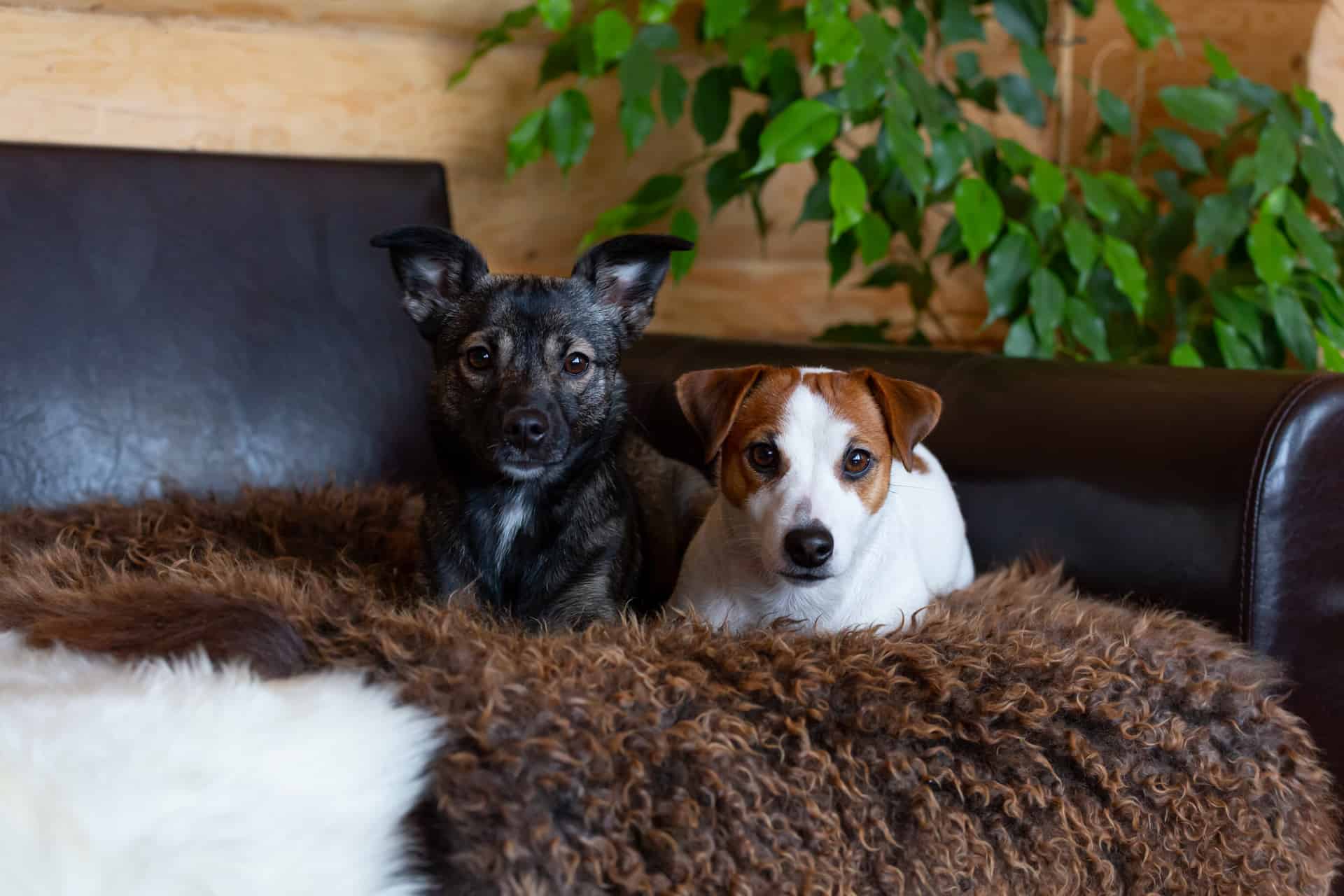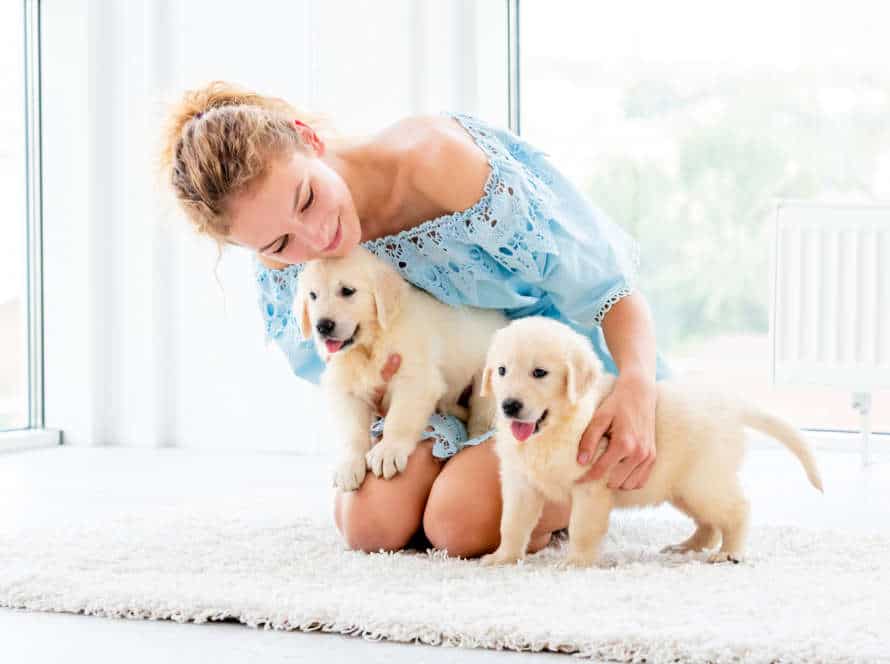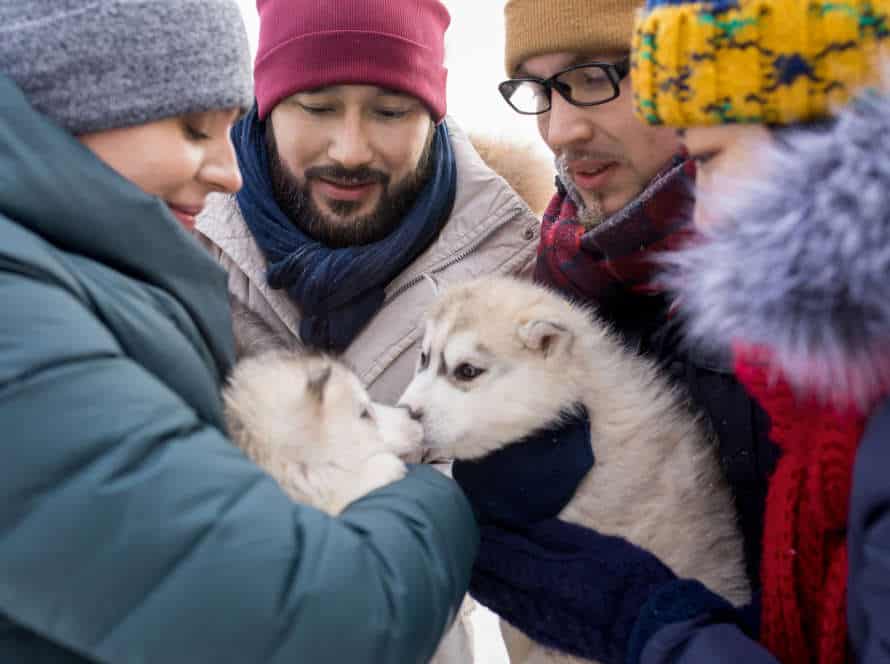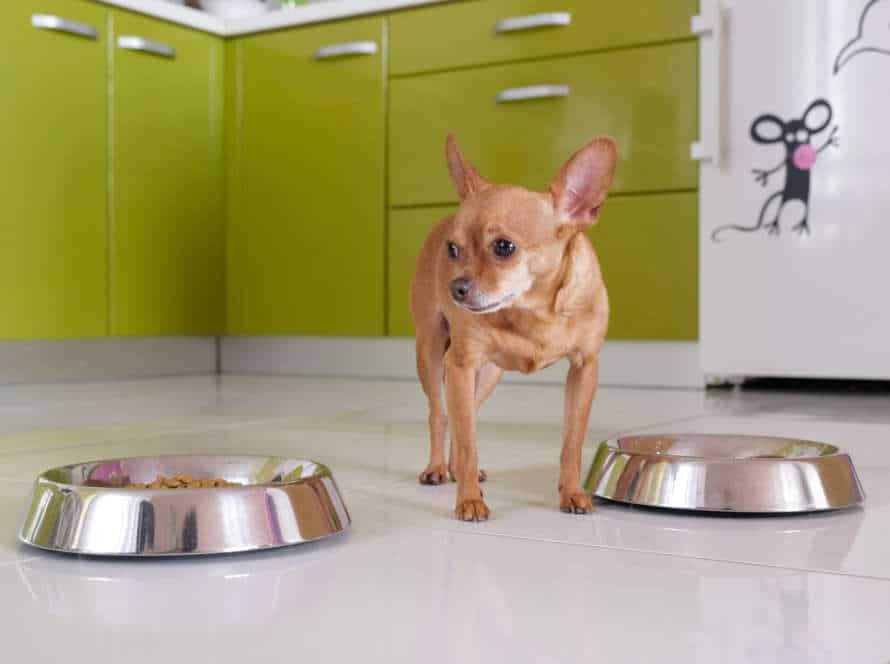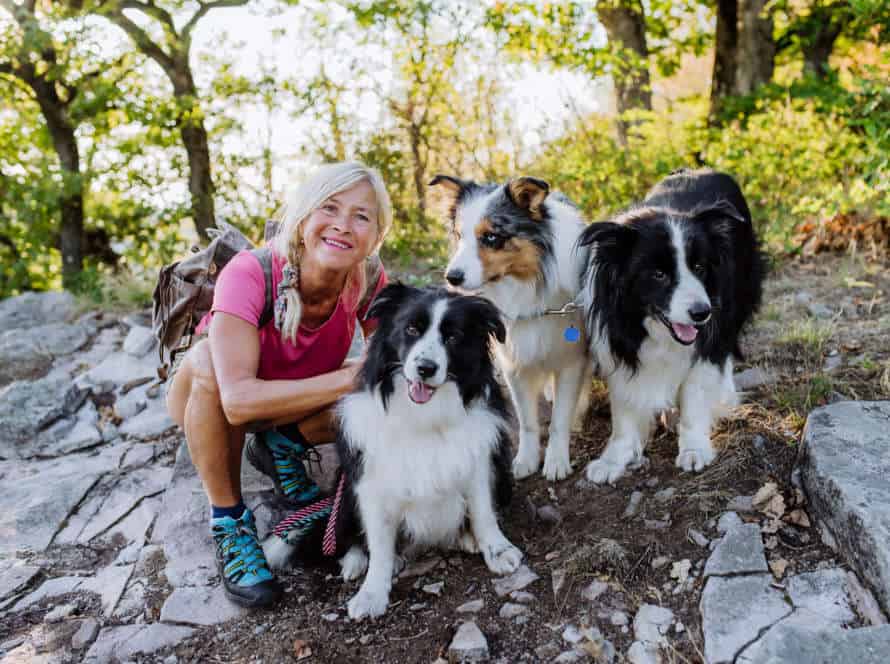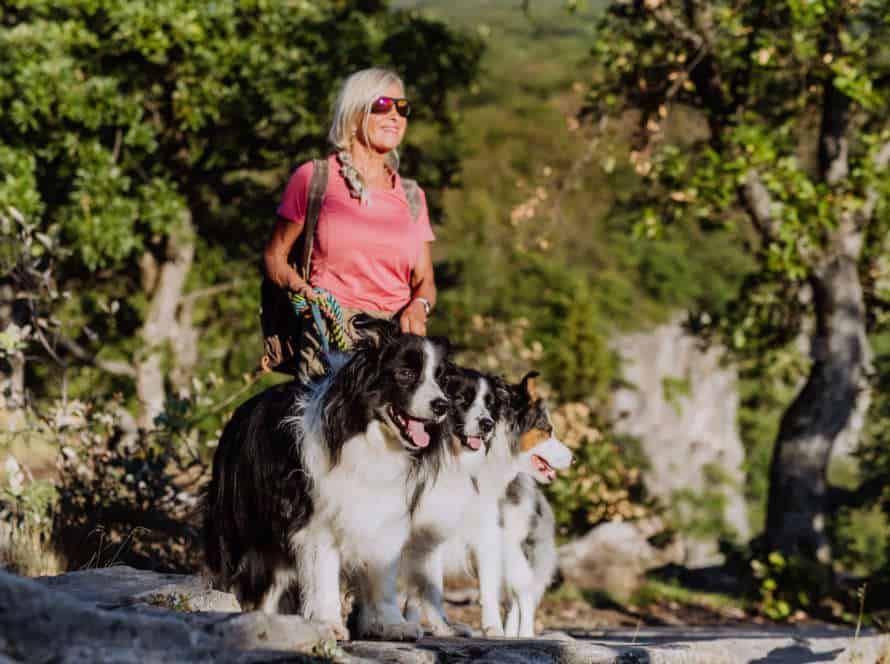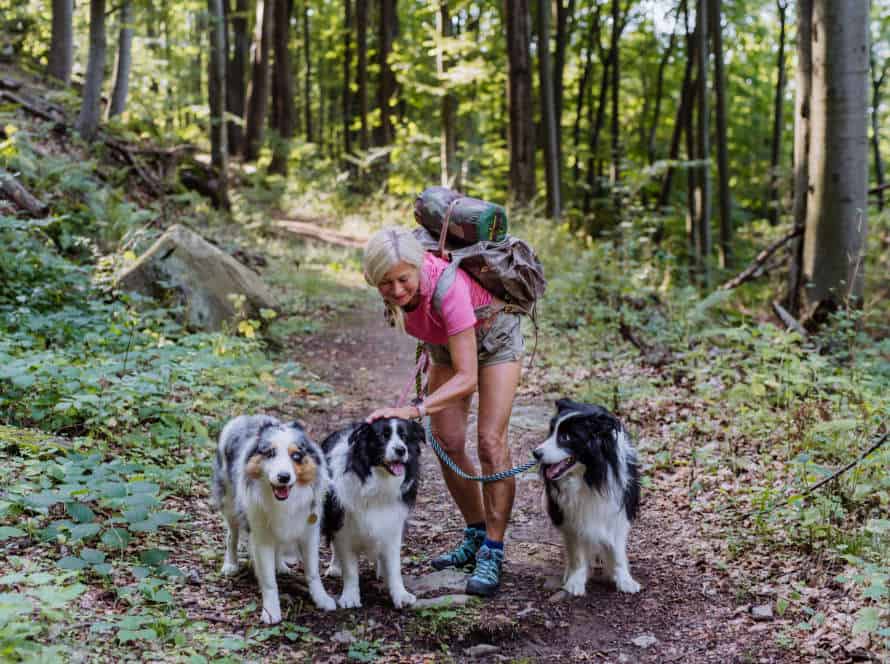Easing the Transition: Tips for Introducing a New Dog
Time to bring home a new pup? It can be tough for both your old and new furry pal. Here are some tips to make it easier:
- Pick a safe place, like a park or a friend’s yard, for the first meet-up.
- Keep both dogs on leashes and let them get acquainted slowly.
- Keep an eye out for warning signs and intervene if needed.
- Once it’s safe, bring them to your home and watch them closely.
- Give each pup their own stuff – food bowls, beds, toys, etc.
- Be patient; it may take time for them to adjust to each other.
By following these guidelines, you can make the transition easier for your new pup.
Preparing for the Arrival of Your New Dog
A new pup in the fam? Exciting! But, before you make the big commitment, you gotta make sure you’re ready. Take a few steps to ensure your pup feels at home. We’ll provide you with some tips to make the transition a breeze. Good luck!
Create a Safe and Comfortable Space for the New Dog
Making a secure and pleasant space for your pup is essential to help them adjust to their new home and family. Here are some tips to make the transition easy:
- Assign a quiet and private spot for your pup, such as a kennel or a separate room. This helps them feel safe and calm.
- Make sure your home is pup-safe by removing any potential risks like toxic plants, sharp objects, and electric cords.
- Gather all the necessary supplies like food, water bowls, toys, and a cozy bed.
- Get familiar with your pup’s routine and slowly introduce them to new experiences, people, and places.
- Go slow when introducing your pup to other pets and family members. Monitor all interactions and give your pup time to get comfortable in their new home.
With a bit of patience and preparation, you can make your pup feel safe, relaxed, and content in their new home.
Have All the Necessary Supplies Ready
Before bringing your pup home, make sure you have all the must-haves. Being ready will help you and your new buddy settle in. Get:
- A collar with an ID tag. This helps if they get lost.
- A tough leash. You’ll need it for daily walks.
- Food and water bowls. Get ones that don’t spill and are easy to clean.
- Quality dog food. Check with your vet for the best type.
- A snuggly bed. Give them somewhere cozy to sleep.
- Toys. Give ’em something to play with and stay mentally stimulated.
By having these things ready, you can give your pup a happy home!
Consider the Needs of Existing Pets
Before bringing a pup home, it’s important to consider the needs and nature of already-existing pets. Here’s some advice for a smooth transition:
- Introduce them in a place like a park or a friend’s yard.
- Keep both on leashes for control.
- Watch their body language. If either is aggressive, end and try again.
- Get them used to each other’s smells by switching bedding and toys.
- Give them separate eating spots to avoid trouble.
Remember, each pet is unique and may take more time to adjust. Patience and constancy are the keys to success.
The First Introduction
Introducing a new pup to the home? Plan ahead! Create a relaxed atmosphere for both the pup and existing dog. To make the process successful, be prepared, patient, and use positive reinforcement. Here are some ideas that could help:
- Make sure to give each dog enough space.
- Provide separate bowls for food and water.
- Introduce the dogs on neutral ground.
- Give each dog equal time and attention.
Choose a Neutral Location for the Introduction
For a successful introduction of a new pup, a neutral location is best. Here are some tips for smooth sailing:
- Opt for a park, not either home.
- Keep both dogs on leashes and come close gradually.
- Check out their body language for signs of fear, stress, or aggression.
- Let them sniff each other and wander while you keep an eye on them.
- Reward good behavior with treats and praise.
- If all goes well, keep watch and eventually bring them into a home setting.
- If any fighting or anxiety occurs, separate and try again later, or reach out to a pro trainer.
Pro Tip: Stay chilled, as dogs sense your emotion and could become anxious if you are.
Introduce the Dogs on a Leash
Introducing a new pup to your home is exciting, but can also be tricky. One great way to do it is with leashes. Here are some tips:
- Walk both dogs on leashes, at a comfortable distance.
- Decrease the distance bit by bit, while giving treats and praise for good behavior.
- Keep an eye out for aggression or anxiety, and separate them if needed.
- Stay patient and if needed, get professional help.
Be Prepared to Separate the Dogs If Necessary
Introducing a new pup to your home? Careful planning and patience are key. Even if you have prepped, have a plan to separate the dogs if needed.
Signs that they need to be separated?
- Growling, barking, lunging, snapping
- Staring for too long
- Fur raised & tail stiff
- Crouching, ears back, tail tucked
If you see any of these, slowly remove one or both. It may take multiple attempts for them to be re-introduced.
Pro-tip: Each dog is different. Take it slow, use positive reinforcement and don’t forget to reach out to a professional if needed.
Making Sure the Dogs Get Along
Introducing a new pup? It can be tricky. To make sure your dogs get along and have a happy home, here’s what you can do:
- Give them time to adjust.
- Separate them if need be.
- Offer lots of rewards.
Let’s take a closer look at each of these strategies for successful dog introductions!
Supervise Interactions at All Times
Introducing a pup to your abode can be tricky. But, supervising their behavior is key for them to get along and make the transition smoother. Here are some ideas to help you:
- Prepare a space for the pup, and an area for the introduction.
- Keep leashes on for their first few interactions. Monitor their body language to avoid aggressive behavior.
- Let them sniff each other without contact. Reward good behavior with treats and compliments.
- Kept their meals separate. When they play and interact, supervise.
- Be patient. Allow them time to get used to each other before leaving them alone.
- Remember, every dog is unique. Supervision will help them form a connection in due time.
Encourage Calm and Playful Interactions
Bringing a new pup into your home doesn’t always go as expected. To make sure the dogs get along, use these tips:
- Encourage calm and friendly behavior by giving treats and praise when they play nicely.
- Offer each dog their own sleeping place, food bowl and toys – this prevents them fighting over resources.
- When they play together, watch out for any roughness or aggression.
- Start with short sessions of playing together and build up the time.
- Make sure that you give each dog individual attention to prevent jealousy.
- Perseverance and training will help them live in harmony.
Encourage Positive Associations with Each Other
Introducing a new pup to your residence? Make sure it’s a harmonious household! Here’s how:
- Choose a neutral location like a park or street for the first introduction. Keep both on leads and let them approach each other at their own pace.
- Keep meetings short and gradually increase time with each one. End before they get anxious or hostile.
- Reward good behaviour with treats and praise. This encourages positive relationships.
- Give equal attention and no favoritism. This stops jealousy and territorial disputes.
- Give each dog their own space – beds, toys, feeding areas. This keeps them secure and prevents fights over resources.
- Supervise interactions until you’re sure they get along. Be patient and give them time to adjust.
Addressing Behavioral Issues
Introducing a new pup into your home can be challenging. You must understand why it is behaving badly and learn how to deal with it. Here are some tips!
- Firstly, provide lots of love and patience.
- Second, make sure it has enough exercise and playtime.
- Third, provide positive reinforcement when good behavior is displayed.
- Last but not least, create a safe and secure environment for your pup.
With these tips, you will be able to make the transition successful for everyone in the house.
Addressing Aggressive or Dominant Behaviors
Addressing aggressive or dominant behaviors in dogs is a must for safety and security of all. Here’s how:
- Train your pup – Positive reinforcement training helps reduce bad behaviors.
- Exercise your pup – Regular exercise and mental stimulation can reduce their urge to act out aggressively.
- Manage their environment – Keep them away from any triggers by providing safe spaces or keeping them securely leashed.
- Get Professional help – Consulting a certified vet, dog trainer, or canine behaviorist can help nip problem behaviors in the bud.
Remember, aggression is usually caused by fear and anxiety, so getting to the root cause is key for resolution.
Addressing Fearful or Anxious Behaviors
Introducing a pup to a home can be a difficult time for both existing and new dog. To make the transition easier and address any anxious feelings that may arise, here are some tips:
- Let pooches meet in a place they don’t know, to avoid territorial fighting.
- Keep both dogs on a leash for the first meetings, to stay in control and keep them safe.
- As they become more relaxed, increase the length and frequency of their time together.
- Give each pup their own area to go to if they feel apprehensive.
- Be consistent and patient, and reward positive behaviour with treats, toys or compliments to help trust and build confidence.
By following these steps, you can bring a new family member into your furry family and create a harmonious home.
Addressing Guarding or Possessive Behaviors
Guardian or possessive behaviors in a pup can be worrying. But with the right training and strategies, these behaviors can be managed and corrected. Here are some tips:
- Stay clear of situations that make your pup act like this.
- Teach it obedience and commands to gain control.
- Help the pup get used to new people and situations gradually and in a positive way.
- Ask for a professional dog trainer or behaviorist if needed.
Remember that progress takes time and patience. With regularity and positive reinforcement, you can make a real difference in your pup’s behavior.
Building a Relationship Between the Dogs
A new pup in the house can be hard! Slow and steady is the way to go. Comfort is top priority for your current canine. A strong bond between the two is the key.
Here’s some advice for developing their relationship:
Provide Equal Attention to Both Dogs
It is important to give equal attention to both dogs when introducing a new one to your home. This builds a great relationship between them. Here are some tips:
- Be there. Give cuddles, love, and approval to both of them.
- Playtime! Organize activities for both, so they get to know each other and expend energy.
- Walks. Take both for a stroll, to strengthen their bond and help them interact.
- Train. Teach both the same cues and reward good behavior.
- Feeding. Give them food in separate bowls, in a dedicated spot. Dogs can be jealous, so don’t let one be overbearing, and make sure they both get enough attention.
Engage the Dogs in Activities Together
Activities together are a great way to build a strong bond between your dogs and make it easier for a new dog to join your family. Here are a few ideas:
- Play fetch! Dogs love to chase and bring back the ball.
- Take a walk – it helps build trust and creates a chance to bond with your dogs.
- Puzzle toys – these can help your pup think and challenge them.
- Training sessions – this helps with obedience, communication and strengthens your bond.
It’s important to always supervise activities and go slowly when introducing a new dog. Don’t force interactions and keep them positive.
Pro tip: Doing activities together is a great way to create strong bonds and healthy relationships between dogs in the same household.
Celebrate Positive Interactions between the Dogs
Positive interactions between dogs are key for a harmonious relationship. Here are some tips to make the transition easier and foster a smooth interaction between them:
- Introductions: Take them to a neutral spot, like a park or a friend’s yard. Keep them both on a leash. Go slowly.
- Supervision: Watch them closely when you first bring the new dog home, especially. Use a crate when you’re not around.
- Positive Reinforcement: Reward the good behavior with treats and praise. Stop negative behavior with a firm “No”. Distract them if they become aggressive.
- Time: Allow the dogs to adjust to each other. It may take weeks or months before they get along.
By following these steps, you can help your dogs create a strong bond.
Frequently Asked Questions
1. Q: How can I introduce my current dog to a new dog?
A: Start by introducing them on neutral ground, such as a park or a friend’s backyard. Keep them on leashes and allow them to sniff each other while keeping a close eye on their body language. If they seem comfortable, slowly increase the amount of time they spend together.
2. Q: Should I get a dog of the same or opposite gender as my current dog?
A: It depends on your current dog’s temperament and behavior. Some dogs do better with dogs of the same sex, while others get along better with dogs of the opposite sex. Getting to know your dog’s preferences and tendencies can help guide your decision.
3. Q: What should I do if my dogs don’t immediately get along?
A: Don’t force them to interact and give them time to adjust to each other’s presence. Make sure they both have their own space to retreat to and supervise their interactions closely. You may also want to consider seeking the help of a professional dog trainer or behaviorist.
4. Q: How can I prevent my dogs from fighting or getting aggressive towards each other?
A: Proper training, socialization, and supervision can help prevent aggression between dogs. It’s important to establish clear boundaries and rules for both dogs from the beginning, and intervene if you notice any aggressive or confrontational behavior.
5. Q: What can I do to help my current dog adjust to a new dog in the house?
A: Give your current dog extra attention and make sure their routine and environment stay as consistent as possible. Introduce the new dog gradually and in a positive and low-key way. You can also try using positive reinforcement training and rewards to encourage good behavior between the two dogs.
6. Q: How long does it typically take for dogs to adjust to each other?
A: It varies depending on the dogs and their personalities, but it can take weeks or even months for dogs to fully adjust and become comfortable around each other. Patience and consistency are key, and it’s important to give both dogs time and space to get used to each other.

